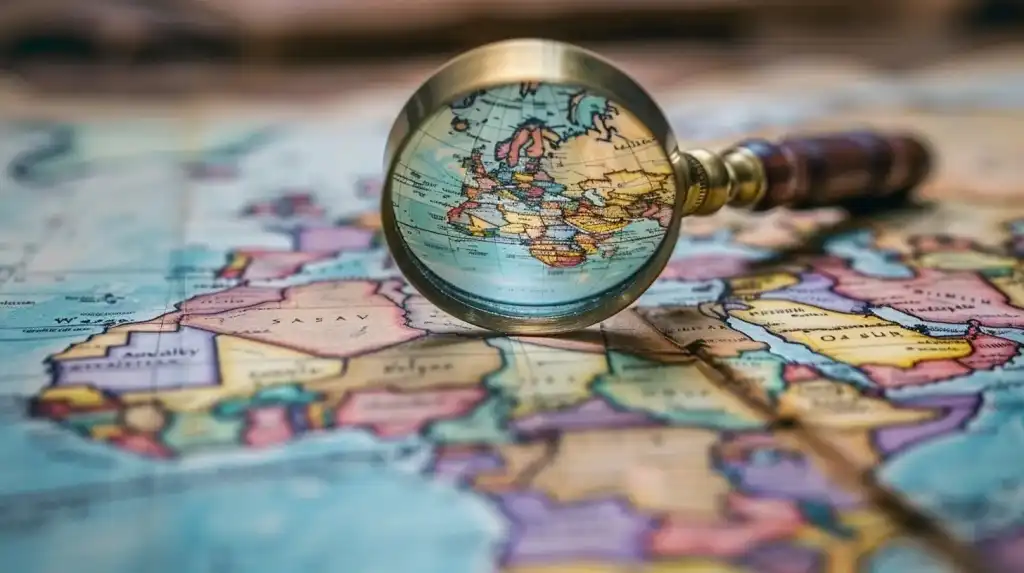21 July 2025
Are you looking to diversify your investment portfolio beyond your home country? Venturing into international mutual funds could be the key to unlocking new financial opportunities. These funds offer exposure to markets outside your own, potentially providing greater returns and reducing your overall risk through diversification. Sounds appealing, right? But, how exactly do you invest in international mutual funds? That's what we're diving into today.In this guide, we're going to break down everything you need to know about international mutual funds in a simple, conversational style. By the end of this article, you'll feel more confident navigating the world of global investments.
What Are International Mutual Funds?

Let's start with the basics. International mutual funds are investment vehicles that pool money from various investors to purchase a diversified portfolio of stocks, bonds, or other securities from markets outside your home country.
In other words, instead of investing in companies based in your country, you're spreading your investments across several international companies. This can give you exposure to economic growth in regions like Europe, Asia, or emerging markets that might be booming at a different pace than your domestic market.
Types of International Mutual Funds
Just like ice cream comes in different flavors, international mutual funds come in various types, each offering different levels of exposure and risk. Here's a breakdown:
1. Global Funds: These invest in both domestic and international markets. It's like having the best of both worlds.
2. Regional Funds: These focus on specific geographical regions, like Europe, Asia-Pacific, or Latin America. Think of it as narrowing your focus to a particular neighborhood of the world.
3. Country-Specific Funds: Want to invest in a specific country? These funds zero in on a single country's stock market. For example, you might find a fund solely focused on Japan or India.
4. Emerging Market Funds: These funds target developing economies, which can offer high growth potential but also come with higher risk.
5. Ex-US Funds: These funds focus on non-US markets exclusively, providing exposure to international companies outside the United States.
Each type of fund has its own risk and reward profile, so it's essential to choose the right one based on your financial goals and risk tolerance.
Why Should You Invest in International Mutual Funds?
You might be wondering—why bother investing in international mutual funds when there are plenty of options at home? Well, there are several compelling reasons:
1. Diversification
You’ve probably heard the saying, "Don’t put all your eggs in one basket." This applies to investing, too. By spreading your investments across different countries and regions, you reduce the risk associated with being too reliant on one market. If one market goes down, others may go up, balancing out your overall returns.
2. Access to Global Growth
Some economies grow faster than others. For example, emerging markets like India, Brazil, or China might experience rapid economic expansion, offering you a chance to benefit from higher growth rates. By investing internationally, you get access to these growth opportunities that might not be available in your home market.
3. Currency Diversification
Currencies fluctuate. When you invest internationally, you're not just diversifying your portfolio with different companies or sectors, but also with different currencies. A weaker home currency could mean higher returns on your international investments when converted back into your local currency.
4. Reduced Domestic Risk
Sometimes, your home market might underperform. Think of economic recessions or political instability. By allocating some of your investments internationally, you can shield yourself from domestic risks.
How to Choose the Right International Mutual Fund
Okay, so you're sold on the idea of investing internationally. The next question is—how do you pick the right fund? There are a few factors to consider:
1. Your Risk Tolerance
International markets can be more volatile than domestic ones, particularly in emerging markets. If you're someone who prefers a steady, predictable return, you might want to stick with more established international markets, like those in Europe or Japan. However, if you're okay with the possibility of higher highs and lower lows, emerging markets could be more your style.
2. Fund Performance
Past performance isn't a guarantee of future results, but it can give you a sense of how well a fund is managed. Look at both short-term and long-term returns, and compare them to similar funds. Are they consistently outperforming their peers? How did they fare during market downturns?
3. Expense Ratios
This is the fee you pay to the fund manager for managing the investments. Lower expense ratios are better because they leave more money in your pocket. Always compare the expense ratios of different international mutual funds to ensure you're not overpaying.
4. Geographical Focus
Do you want broad exposure to global markets or are you interested in a specific region or country? Your answer will help narrow down your fund choices. For example, if you believe Asia’s economy will outperform others, you might focus on a fund that invests heavily in that region.
5. Fund Manager’s Expertise
You want a fund manager who knows the ins and outs of international markets. Do some research to find out how experienced they are in navigating global investments. A seasoned manager can make a big difference when it comes to maximizing returns and minimizing losses.
Steps to Invest in International Mutual Funds
Investing in international mutual funds isn't rocket science, but it does require a bit of homework. Follow these steps to ensure you're on the right path:
1. Open an Investment Account
First things first—you need a brokerage account or an account with a mutual fund provider. If you already have one, great! If not, you'll need to open one. Many online brokers offer accounts with no minimum balance and low fees, making it easy for beginners to get started.
2. Research Funds
Once your account is set up, the next step is research. Use tools like Morningstar or your brokerage’s research tools to explore different international mutual funds. Pay attention to performance, fees, and the fund's investment strategy.
3. Evaluate the Fund’s Holdings
Dive into the fund's portfolio to see what it's actually investing in. Are the companies or bonds in countries you're comfortable with? Check if the fund is diversified across sectors and countries or concentrated in a few areas. This will give you a better idea of the risk you're taking on.
4. Check the Fund's Minimum Investment
Some mutual funds have minimum investment requirements. Make sure you’re aware of how much you need to invest to get started. It could be as low as $500 or as high as $5,000, depending on the fund.
5. Consider Dollar-Cost Averaging
Rather than putting all your money into the fund at once, consider using a strategy called dollar-cost averaging. This means you invest a fixed amount at regular intervals (monthly, quarterly, etc.). It helps smooth out market volatility and ensures you’re not buying at a market peak.
6. Monitor Your Investments
Once you’ve invested, don’t just set it and forget it. Keep an eye on how your international mutual fund performs and make adjustments if needed. If the fund isn't meeting your expectations or if global market conditions change, you may want to reevaluate your investment.
Risks of Investing in International Mutual Funds
Investing in international mutual funds can be rewarding, but it’s not without risks. Let’s talk about some of the potential pitfalls:
1. Currency Risk
As mentioned earlier, currency fluctuations can impact your returns. If the currency in the country you're investing in weakens against your home currency, you could lose money, even if the investment itself performs well.
2. Political and Economic Risks
International markets, especially emerging ones, can be more susceptible to political instability, economic crises, or natural disasters. These risks can affect the performance of your investments.
3. Lack of Familiarity
Investing in international markets can feel like stepping into uncharted territory, especially if you're unfamiliar with the economies or companies you're investing in. This may make it harder to predict market trends or assess risk.
4. Higher Fees
Since international mutual funds often require more research and management than domestic funds, they can come with higher fees. Be sure to factor this into your decision-making.
Final Thoughts
International mutual funds can be a fantastic way to diversify your portfolio and tap into the growth potential of global markets. However, like any investment, they come with risks and require due diligence. By carefully selecting the right fund, evaluating your risk tolerance, and staying informed, you can make the most of this exciting investment opportunity.
Remember, investing is a marathon, not a sprint. Take your time, do your research, and make decisions that align with your long-term financial goals. Ready to go global with your investments? The world is your oyster—go ahead and dive in!
---
There you have it! A complete guide on how to invest in international mutual funds. Now, are you thinking about adding a little international flavor to your portfolio? Let us know in the comments!


